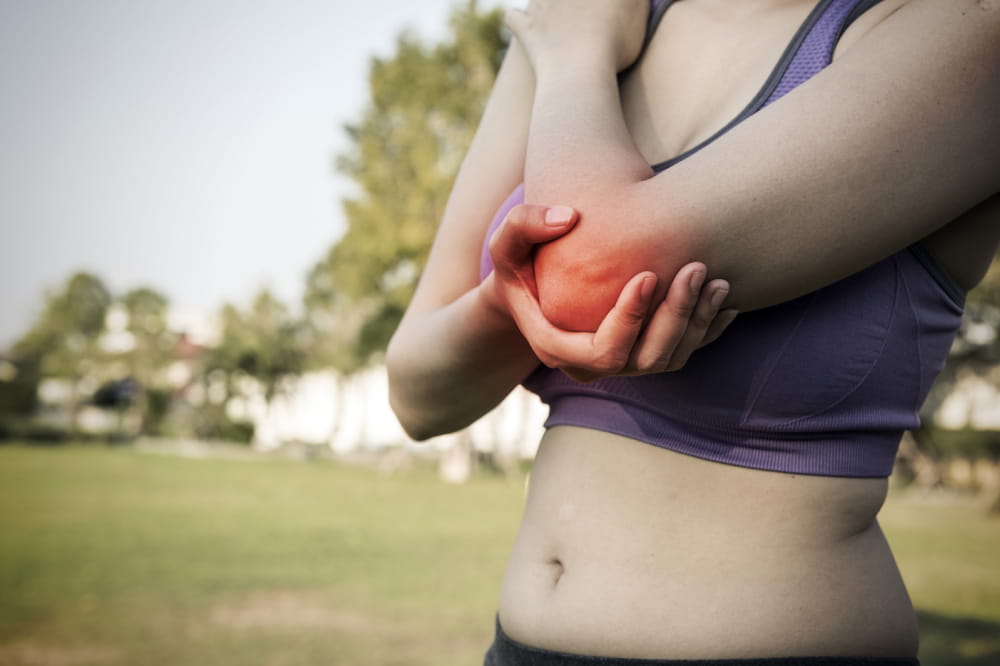
Bursitis – Causes, symptoms, and management
A bursa, a tiny fluid-filled sac that cushions between bone and muscle, skin, or tendon, becomes inflamed when someone has bursitis. They supply lubricant to the joint, which helps to lessen friction when that part moves. This soft tissue ailment frequently impacts the knees, calf, hip, buttocks, shoulder, and elbow. If you engage in a career or hobby that creates a lot of strain on your joints, your risk of developing bursitis increases.
Types
Your body has more than 150 bursae. Any of them may be impacted by bursitis. Among them are:
- Subacromial bursitis in the shoulders
- Olecranon bursitis, often known as barfly’s or miners’ elbow.
- Housemaid’s knee or prepatellar bursitis.
- Feet bursitis, particularly the area next to the big toe, heel, and ball of the foot.
- Trochanteric or iliopectineal bursitis in the hips.
- Ischial bursitis, often known as weaver’s bottom.
Causes
Bursitis is frequently brought on by repetitive activities or spending a lot of time in positions that strain a particular area of your body. There can be various other causes that might be connected to this condition. These are:
- A cut or bruise becomes infected
- Bad walking habits or posture
- An irregular or misaligned joint or bone can put stress on soft tissues (such as a discrepancy in leg length or a deformed joint)
- Rheumatoid arthritis, osteoarthritis, and gout
- Metabolic diseases like diabetes
Symptoms
General signs and symptoms include:
- Joint pain and swelling
- Thickening of your bursae
- Erythema, or “skin redness,” may appear purple or slightly darker on dark skin tone
Other symptoms of an infection that is causing bursitis include:
- A sensation of heat or warmth
- Fever
- Chills
Treatment options
The severity of a person’s symptoms will determine the best course of treatment for bursitis. To relieve the discomfort and swelling while your bursa recovers, your doctor may recommend the following at-home remedies:
- Elevate the hurt region
- Several times per day, apply a cold compress or ice packs wrapped in a small towel to the area for 15 minutes at a time.
- Apply heat to the area with a hot water bath or heating pad wrapped in a towel.
- Switching between heat and ice compress
- Wear a brace, sling, or splint to support the wounded area
Although most bursitis cases may be managed at home, those with severe instances may need steroids and antibiotics. Prostaglandin, a substance produced by the body that induces inflammation, is blocked by steroids.
An occupational therapist can suggest alternative ways to carry out everyday tasks and work habits to avoid stress or harm to an affected area. To make daily tasks more accessible, the therapist may also propose assistive gadgets and build hand and wrist splints.
Prevention techniques
To keep bursitis at bay, these are some prevention techniques:
- Learn the appropriate stance or motion for activities at work or in sports
- Start slowly with any new activities to avoid injury
- Avoid spending too much time sitting or kneeling. Your joints will be under a lot of pressure in these situations
- When kneeling or leaning on your elbows, use cushions and pads
- Take breaks when undertaking repetitive tasks
- Before beginning any intense activity, warm-up
- Always maintain proper body posture




